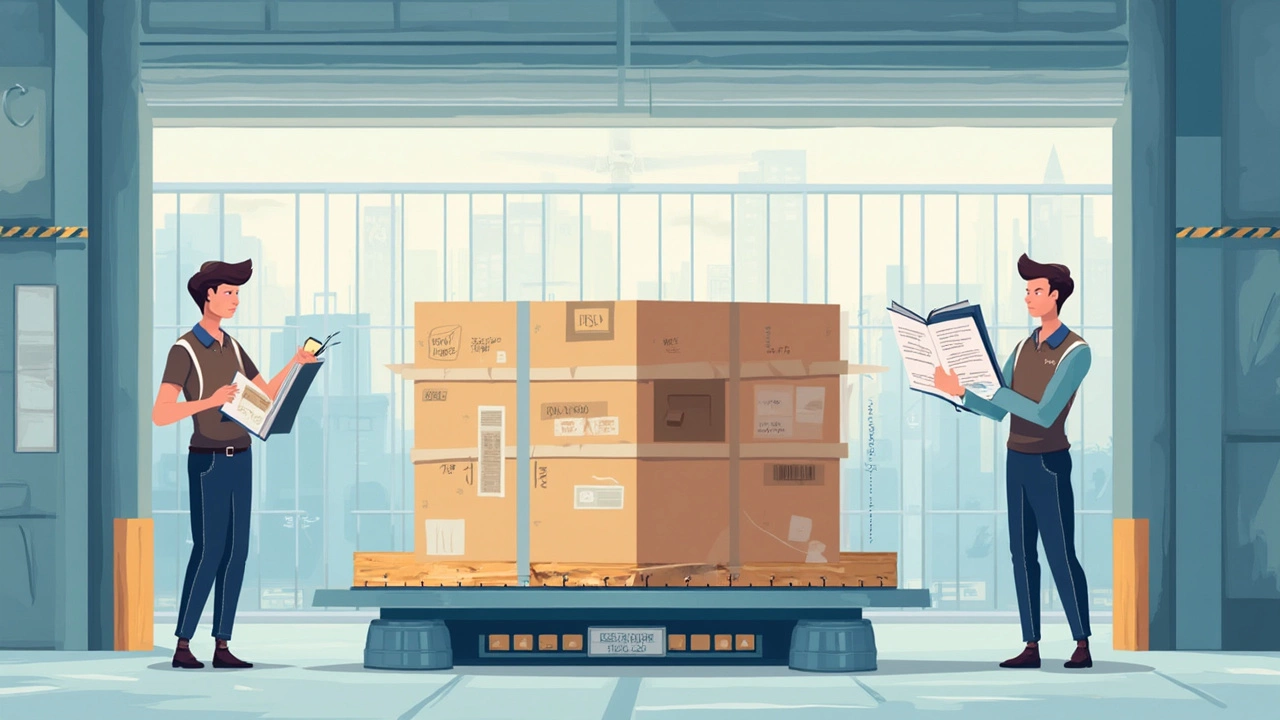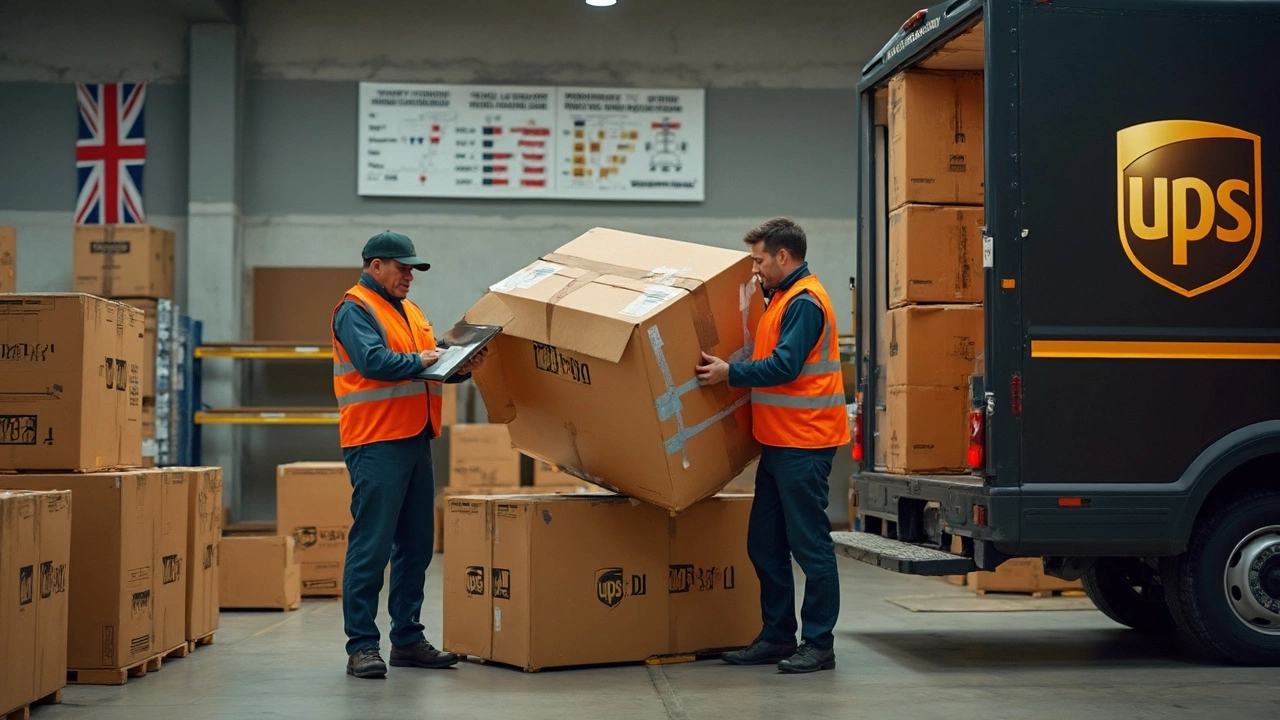Thinking about shipping something massive with UPS? It's easy to assume they'll take just about anything, but there are strict limits. UPS sets a maximum package weight of 150 pounds—so forget about shipping grand pianos or MMA cages in a single box. There's also a size cap: the longest side can’t be more than 108 inches, and the total of length plus girth (imagine measuring around the thickest part, then adding the length) can’t exceed 165 inches. Go past these, and you're not just paying more—UPS might flat out refuse your box.
For folks sending stuff overseas, you've got to play by the same basic rules. But customs can get picky, especially if your package is bulky or close to the size limit. Certain countries have smaller limits, so always check the destination's rules before you start wrestling with cardboard and packing tape.
- UPS Maximum Size and Weight Rules
- Extra Large and Oversize Shipments
- International Shipping Limits
- Tips to Ship Big Packages Wisely
UPS Maximum Size and Weight Rules
If you’re shipping with UPS, you have to play by their size and weight limits—there’s no getting around it. Here’s what you need to know right off the bat. The maximum weight UPS allows per package is 150 pounds (68 kg). Ship anything heavier and it won't even make it past drop-off.
Next up is package size. The absolute longest side you can have is 108 inches (that’s 9 feet). UPS also uses a formula to calculate what they call “length plus girth.” Girth is just a way of saying “measure around the thickest part.” So here’s the trick:
- Measure the length (longest side).
- Then add 2x the width plus 2x the height (the girth).
So, Length + (2 x Width) + (2 x Height) must be 165 inches or less. If your box is bigger, it’s not shipping with UPS—period. Here’s how that stacks up visually:
| Limit Type | Measurement |
|---|---|
| Maximum Weight | 150 lbs (68 kg) |
| Maximum Length | 108 in (274 cm) |
| Max Length + Girth | 165 in (419 cm) |
If your item is oddly shaped, don’t try to squeeze through by fudging the numbers. They measure everything by the “dimensional weight” too, so even a lightweight but bulky package counts as oversized. And if you go over the size or weight cap, you’re staring down some serious fees—sometimes up to $1,000 on top of regular shipping. Make sure you measure and weigh your package as honestly as possible before handing it off to the driver or dropping it off at a UPS center.
Extra Large and Oversize Shipments
So, what happens when your shipment is bigger than the standard? UPS calls anything weighing more than 70 pounds or measuring more than 130 inches (but not over 165 inches) in length and girth an “oversize package.” These aren’t refused outright, but you will pay a premium. The UPS maximum size is pretty clear—don’t try to sneak past UPS with something bigger because their systems automatically flag stuff that breaks the rules, and the fees are steep.
Here’s what you’ll want to know about UPS package limits for big stuff:
- Packages over 70 lbs or longer than 48 inches on the longest side get special handling labels and extra charges.
- Hit the “oversize” threshold (over 130 inches in length and girth, under 165 inches) and you’ll pay an Oversize Package Surcharge. In 2025, that fee is usually over $150 per package, depending on where it’s going.
- If your shipment goes over 150 lbs, or more than 108 inches in length or 165 inches in length and girth, UPS won’t move it with their normal small package service. You’ll have to use UPS Freight or another heavy courier.
| Package Type | Max Weight | Max Length | Max Length + Girth | Typical Fee (USD) |
|---|---|---|---|---|
| Standard | 70 lbs | 48 in | 130 in | No surcharge |
| Oversize | 150 lbs | 108 in | 165 in | $150+ surcharge |
| Too Large | >150 lbs | >108 in | >165 in | Refused/Use Freight |
If you’re shipping something awkward—think rugs, long car parts, gym equipment—measure and weigh every part, including packaging. UPS charges you for whichever is bigger: the actual weight or the dimensional (volumetric) weight. If your box is huge but light, you still get hit with a price tag as if it’s heavier. It’s all about how much room your package hogs in the truck rather than what the scale says.
Cushioning is your friend for heavy and large items. UPS often recommends double-walled boxes and lots of padding to protect gear that’s both heavy and bulky. Sharp edges, unbalanced loads, or poorly taped seams almost guarantee trouble. If the package falls apart because it’s too heavy or awkward, you’re likely out of luck for any claims.

International Shipping Limits
Planning to send a big package overseas with UPS? Here’s where things get a bit more technical. The basic UPS maximum size and weight limits still apply—150 pounds for weight, 108 inches for the longest side, and 165 inches for length plus girth. That’s the upper cap for pretty much everywhere. But not every country accepts packages that big. Some set lower international shipping limits, and it’s up to the sender to know those rules before booking a shipment.
For example, if you’re shipping to the UK, you can max out UPS’s broad size and weight limits, but countries like Brazil or Israel drop the max weight way down—sometimes as low as 44 pounds. Australia and Japan stick closer to the UPS rules, but again, it pays to double check.
Here’s a quick look at a few sample international limits:
| Destination | Max Weight | Max Size (Inches) |
|---|---|---|
| UK | 150 lbs | 165 (L+G) |
| Brazil | 66 lbs (30 kg) | 118 (L+G) |
| Saudi Arabia | 70 lbs (32 kg) | 118 (L+G) |
| India | 150 lbs | 165 (L+G) |
Also, keep in mind: some bulky stuff just won’t make it through customs, or it’ll get held up for weeks because it doesn’t fit their inspection equipment. Always double check with UPS and the destination’s customs page if you’re close to the limits or shipping something that sticks out. And don’t forget—a lot of countries slap on big fees for anything tagged as oversize shipments.
The bottom line? When dealing with international shipping and large packages, there’s no one-size-fits-all rule. Always check both UPS’s main guidelines and the rules for the country you’re shipping to, or you might find your item stuck in a warehouse—or worse, sent back at your expense.
Tips to Ship Big Packages Wisely
If you’re determined to send a big box through UPS, there’s ways to dodge rookie mistakes and keep things smooth. Following a few simple rules can save you money and headaches down the line.
- Measure everything carefully. UPS charges extra for packages that go over their limits, and sometimes they’ll just turn away your shipment. Always double-check the length, girth, and weight with a tape measure and a reliable scale before you seal the box.
- Pick the right packaging. Professional grade, double-walled boxes make a big difference—UPS tosses around heavy packages, and flimsy boxes can bust open mid-shipment. Padding your stuff properly protects it and can even keep you from getting hit with extra handling fees.
- Know the surcharge triggers. Anything over 70 lbs usually gets a hefty handling fee (around $27.50 as of late 2024), and oversized packages (length + girth over 130") get slapped with extra surcharges. Keep an eye on the numbers—these can add up fast.
- Print clear, accurate labels. For international shipping, messed up paperwork means big delays. Make sure the customs forms match what's in your box, and include proper harmonized codes if you’re sending stuff abroad.
- Break up your shipment if possible. If you can split a massive shipment into smaller boxes under the UPS maximum size, you’ll pay less in surcharges and reduce the risk of rejection.
Just to give you an idea, here’s a quick breakdown of the main UPS maximum size and extra charges:
| Limit/Surcharge | Measurement/Amount |
|---|---|
| Max Weight | 150 lbs |
| Max Length | 108" |
| Max Girth (length + 2x width + 2x height) | 165" |
| Additional Handling Surcharge (Weight over 70 lbs) | $27.50 (2024) |
| Large Package Surcharge | Varies, starts at $110 (2024) |
One last thing: always check what your destination country will actually allow at the border. For example, shipping into Japan or Australia? Strict rules, sometimes smaller max dimensions than the basic UPS global limit. Never a bad idea to call a UPS rep or use their online shipping calculator before you commit.


